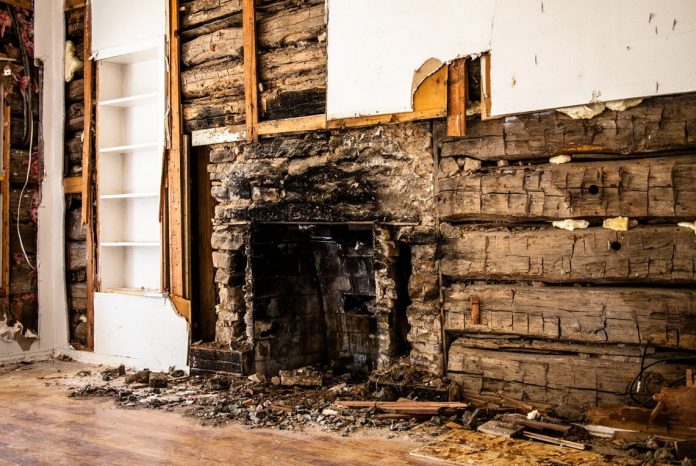
The Flower Mound Town Council emerged from its closed executive session during its Monday night meeting to move and vote immediately to buy the three lots on Quail Run where the 1860’s historic log cabin is located.
“Under the direction of the council, the town staff has been in negotiations with the property owner for the past six or so weeks,” said Town Manager Jimmy Stathatos. “It had been discussed to possibly restore the cabin and then move it to Heritage Park, but that wouldn’t be authentic. It was decided to keep it where it was discovered so it can be the ‘crown jewel’ for a new public park.”
The historic cabin was discovered by Flower Mound resident and developer Curtis Grant this February after he’d purchased the property with the intention of tearing down the 4,500-square-foot home at the site to build a 12-home development with his Vaquero Development company.
Imagine his surprise opening a hole in a living room wall only to be faced with a log cabin wall. He went on to discover that the log structure surrounded an approximately 16-by-16-foot room.
The home’s previous owner had told Grant about finding an early 1900s newspaper clipping in the walls of the living room earlier, so Grant assumed that was about the time period of the cabin’s origin.
Flower Mound can be grateful that Grant’s a developer with his community’s best interest and historic background at heart. He could have very easily gone ahead with his demolition plans to create his Vaquero Development project; no one would have ever known about the hidden cabin.
Grant contacted Denton County’s Office of History and Culture Director Peggy Riddle who told him: “Curtis, it’s not an early 1900’s structure or cabin; it’s a mid-1800’s structure.”
Riddle added that it was likely constructed by William Gibson of the Peters Colony group that settled much of the area.
Research shows that Gibson started Lonesome Dove Baptist Church in 1846 and moved it to Denton Creek in 1847.
An assessment study by University of Arkansas’ Professor David Stahle, director of the Tree-Ring Laboratory put the log cutting at between 1858-60.
Since the discovery, many community residents, including local historian and Flower Mound Foundation member Mark Glover, have pushed to preserve the cabin at its location to maintain its historic authenticity.
As he learned more about Gibson and the historic value of the log cabin on his land, Grant decided he wanted to work with the Flower Mound Foundation to help preserve it in its original location.
At one point, there had been a discussion about moving the cabin to Heritage Park, however doing so would negate the historical aspect of the cabin.
“Both the staff and the council have been busy in negotiations with Curtis and we’re just about a week away from having a signed contract—although the town has a verbal agreement,” said Stathatos. “It was decided that keeping the cabin where it was built, although more costly than moving it to Heritage [Park], was the right thing to do.”
Mayor Tom Hayden added that Grant had been more than open during contract negotiations and that he’s donating one of the three lots to the town.
“A big ‘thank you’ should go to Curtis, because he’s gone out of this way to go the extra mile on this,” said Hayden. “He didn’t have to let anyone even know about the cabin, but he did; and then he went even further.”
Hayden pointed out that while keeping the cabin on its historical site, rather than moving it, will also guarantee saving many large trees as part of the town’s canopy.
He said that getting from buying the property to opening a public park won’t be a quick time frame.
“First we need to sign the contract, then it will go to the Parks & Recreation staff for a plan [to restore the cabin and create the surrounding park space], plus we need to look at the restoration cost,” said Hayden. “In addition to saving so many large trees, the other reason to buy the three lots involves where to put parking and other components to make the land around the cabin itself into a park-like atmosphere; a place that school-age students on field trips can enjoy.”
He added that the town also needs to look at future security concerns; something the original builder needn’t have considered.
“Clearly, this was not the first cabin William Gibson built in North Texas, but it may have been the last,” said Glover in a previous interview. “He died in 1865, just five years after this cabin was built.”





















